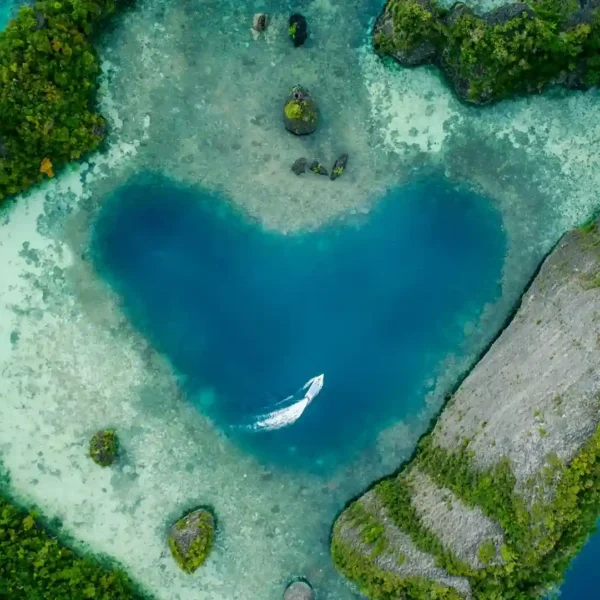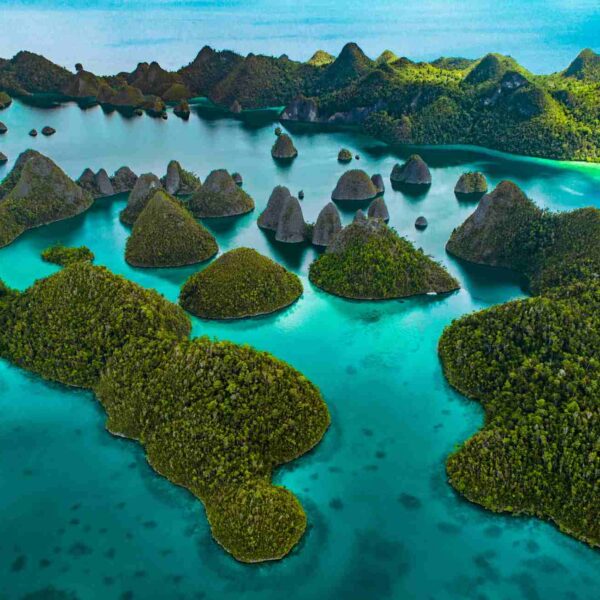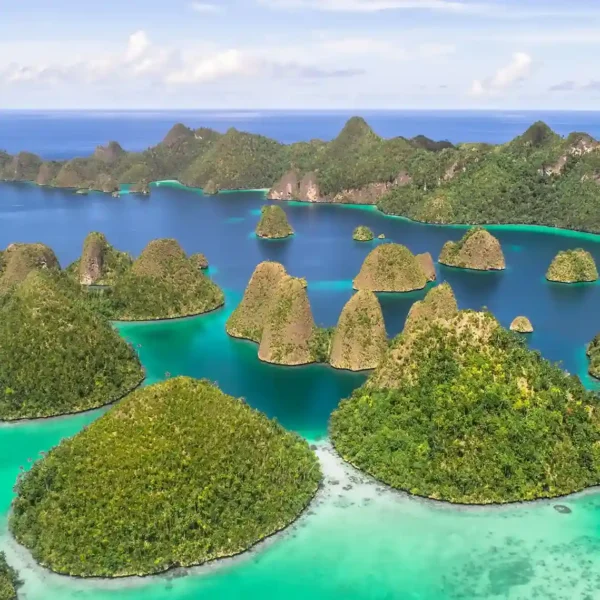Whether diving or snorkeling in Raja Ampat, it is an unforgettable experience and a dream for all divers around the world. Raja Ampat, located in the easternmost of the Indonesia Archipelago, precisely in Southwest Papua, is often hailed as an underwater paradise. As the Last Paradise on Earth, Raja Ampat is renowned for its unique biodiversity, crystal-clear seas, and breathtaking underwater landscapes. Despite its reputation as a marine paradise, many divers wonder if it is safe to go diving in Raja Ampat.
Raja Ampat Marine Biodiversity
In the heart of the Coral Triangle, Raja Ampat is a haven of rich marine biodiversity. The marine environment has over 1,500 different species of fish and 537 different kinds of coral. There is an incredible variety of marine life in its waters, including pygmy seahorses and manta rays. On certain night dives, it is also possible to see endemic Raja Ampat Epaulette sharks (walking sharks) as well as wobbegong sharks. Among the juvenile fish you can see are batfish, angelfish, butterflyfish, barramundi cod, parrotfish, etc. There are also some of the world’s most beautiful coral reefs in this area. As a result of the healthy reefs and abundance of marine life, the conditions for diving are clearer and more predictable, which is vital for safe diving.
Read More: Is it Worth Going to Raja Ampat?
Raja Ampat Diving Conditions
Before planning a dive trip to Raja Ampat, you should be aware of the diving conditions. To ensure a safe and enjoyable diving experience, it is important to understand and plan for these issues. There are a few diving conditions you need to be aware of in Raja Ampat.
1. The Currents
Diving should always be planned with currents in mind, as they are constantly changing. Several factors, such as the tides, the full and new moon, and the layout of the dive sites, influence the currents in Raja Ampat. Performing current checks before diving or snorkeling is essential to ensuring that the dive/snorkel plan matches the current sea state and that each individual knows how to behave in strong currents, including down currents, so they and others in their group can remain safe.
Please note! Not all dive sites are suitable for all divers. Several dive sites in Raja Ampat are only suitable for experienced and capable divers who can handle strong currents. Despite this, beginners can still dive in shallow water with calm currents.
2. Water Temperature
To ensure a safe and enjoyable dive in Raja Ampat, it is important to consider the water temperature conditions. During the dry season (between April and October), the water temperature in Raja Ampat is generally around 28°C to 30°C (82°F to 86°F). This temperature range is suitable for most divers, allowing for a comfortable and enjoyable underwater experience. However, during the wet season (between November and March), the water temperature in Raja Ampat can drop to around 24°C to 26°C (75°F to 79°F). This temperature range may feel slightly cooler, especially for divers accustomed to warmer waters.
3. Visibility
The visibility conditions in Raja Ampat can vary depending on factors such as the time of year, location, and weather conditions. However, in general, Raja Ampat offers favorable visibility conditions for diving. The peak season for diving in Raja Ampat is between October and April when the weather is generally dry and sunny. During this period, visibility conditions are usually at their best, ranging from 20 to 40 meters (65 to 131 feet). During the off-season, from May to September, visibility conditions can vary. Rainy periods and strong winds can hinder visibility, especially in shallow waters. However, there are still opportunities for good visibility, especially in areas with strong currents or current breaks.
Is It Safe to Go Diving in Raja Ampat?
As long as divers follow standard health protocols and dive accordingly, diving in Raja Ampat is certainly safe. It is highly recommended to dive accompanied by an experienced dive guide who is familiar with the dive site conditions and can provide guidance tailored to each diver’s experience level.
Raja Ampat Diving Safety Tips.
To stay safe while diving, you must review the safety rules and emergency procedures. Keep in mind the depth limit and attend dive briefings to ensure you know what to expect. Here are some of the things you need to be aware of before you start diving in Raja Ampat
- Ensure that you use appropriate equipment and that it works well in the conditions specific to your dive.
- Choose a dive site that is suitable for your level of diving experience. A shallow water site with calm currents is best for beginners, while a site with a slightly stronger current is best for advanced divers.
- Always follow and obey the instructions of the dive guide, who is more familiar with the conditions at the dive site.
- Be sure to stay hydrated before diving and avoid caffeine, drugs, and alcohol.
Read More: Best Time to Visit Raja Ampat
Raja Ampat Liveaboard
Diving in Raja Ampat can be done by participating in a Raja Ampat Liveaboard trip because Raja Ampat is very far and remote, and it can only be reached by boat. Taking an overnight Raja Ampat tour package is the best way to begin your Raja Ampat dive trip. Make sure you choose a certified and trusted tour operator, such as Komodo Luxury.

Komodo Luxury is a top-notch tour operator certified by TripAdvisor that offers Raja Ampat tour packages tailored to your needs and preferences. For the best experience, consider choosing an overnight trip ranging options from 4 to 12 days so you can be satisfied exploring Raja Ampat and its best dive sites. During a liveaboard trip, divers get to dive more frequently, including night dives, ensuring that every minute of their time is maximized.
Ready to discover a new experience at the best dive site in Raja Ampat? Book Raja Ampat tour package and create lasting memories as you explore the Last Paradise on Earth!
Read More Raja Ampat: Where to Stay in Raja Ampat


























